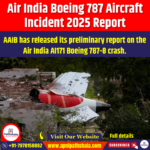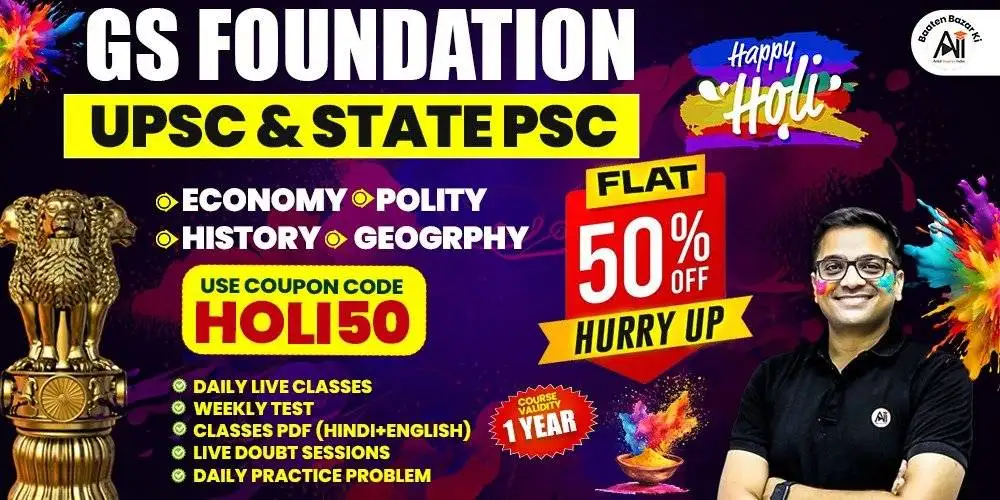|
Prelims – High-Level Committee on Simultaneous elections, One Nation, One Election, Article 356, Article 324A, Article 325, Article 82A Model Code of Conduct (MCC), Law Commission, Federalism, Electronic voting machines (EVMs), VVPAT, No confidence motion, RPA 1951 Mains – GS-II (Constitution, Polity and Elections). |
Context –
A ‘High-Level Committee on One Nation, One Election,’ headed by former President Ramnath Kovind, was formed by the Union Government in September 2023. The Committee has consulted with state and national political parties as well as the general public and legal experts, and possible suggestions are expected.
Recently, The Hon’ble President of India, Shrimati Droupadi Murmu, received a report from the High Level Committee on Simultaneous Elections, which was chaired by the former President of India, Shri Ram Nath Kovind. The Report, which has 18,626 pages, is the result of 191 days of research and extensive interactions with experts and stakeholders.
Background: Simultaneous Elections in India
- In line with the present discourse in India, the Franchise Committee Report of 1932 provides historical context for the idea of simultaneous elections.
- Elections were conducted simultaneously to constitute the State Legislative Assemblies and the House of People because they were created under the Constitution at the same time.
- It is important to remember that the first general elections under the new Constitution took place in October 1951 and May 1952. A three-tiered system was used to elect members of the Upper Houses, members of the Lower Houses at the federal level and in the states, as well as the President and Vice President.
- By March 1957, the second general elections for the State Legislative Assemblies and the House of the People had been completed on schedule.
- In 1957, to conduct simultaneous elections the State Assemblies had to be dissolved to align their terms with the House of People’s election.
- The Report on the Second General Elections in India, 1957 states: “It was therefore, decided that the second general elections should be completed before the end of March, 1957, and that the existing Houses of Legislature should be dissolved prematurely, whenever necessary, in order that the newly elected Houses might meet soon after the general elections were over”.
- In the first decade, i.e., 1951-1960, when the practice of conducting simultaneous elections prevailed, there were two elections in a decade.
- The following ten years, 1961–1970, saw five States (Bihar, Kerala, Punjab, Uttar Pradesh, and West Bengal) hold three elections in a row, interrupting the pattern of simultaneous elections. The situation worsened for the following ten years, from 1971 to 1980, and so forth.
Numerous studies and reports have discussed the idea of simultaneous elections, which basically suggests a return to the earlier practice of holding elections concurrently:
- The Election Commission of India promoted simultaneous elections for the State Legislative Assemblies and the House of People in its Annual Report of 1983.
- The Law Commission of India noted in its 170th Report (1999) that the frequent application of Article 356 was one of the many factors that disrupted the custom of simultaneous elections for the House of People and State Legislative Assemblies, which was common before 1967. The ruling made by the Supreme Court in S.R. Bommai v. Union of India limited the application of Article 356, though.
- The National Commission to Review the Working of the Constitution called for the return of simultaneous elections in 2002 after recognizing the negative effects of separate elections.
- Once more, the Law Commission Report (Draft), 2018 emphasized the advantages and significance of holding simultaneous elections. It stated that it is improbable that holding concurrent elections would negatively impact the fundamental framework of the Constitution.
- Following a comprehensive analysis of the challenges associated with holding elections in 2015, the Department-related Parliamentary Standing Committee on Personnel, Public Grievances, Law and Justice recommended that holding elections simultaneously would be essential to help India progress toward high economic development.
- In January 2017, NITI Aayog formulated a working paper titled “Analysis of Simultaneous Elections: The What, Why and How,” The report conducted a thorough investigation and recommended a return to simultaneous elections, much like in the early decades.
The rationale for Simultaneous Elections:
- The enormous costs currently incurred for holding separate elections: It would lessen the enormous costs currently incurred for holding separate elections annually. The Election Commission of India (ECI) has set the current cost of holding elections for the Lok Sabha and State Legislative Assemblies of States and Union Territories at INR 4500 crore.
- The Model Code of Conduct’s (MCC) implementation during the elections causes a stalemate in policy: The whole development agenda and operations of the Union and State governments in a State that is headed for election are suspended by the imposition of MCC. Even regular governance is impacted. Extended durations of MCC are imposed as a result of frequent elections. This frequently results in a governance deficiency and policy stagnation.
- Impact on providing essential services: Political rallies cause noise pollution and traffic disruptions. This disturbance would only last for a specific amount of time if there are simultaneous elections.
- Burden on crucial manpower that is deployed during election time: One example of this would be the 14th Lok Sabha Elections. State assembly elections in Odisha, Andhra Pradesh, Sikkim, and Arunachal Pradesh coincided with the elections. The Central Armed Police Force (CAPF) dispatched 1349 mobile companies and 1077 in situ companies to cover the nine phases of the election.
- PROMOTES CONSISTENCY AND STABILITY IN GOVERNANCE: Simultaneous elections present a workable way to tackle the two problems of encouraging better governance and cutting down on election costs. Simultaneous elections harmonize the process of obtaining the people’s mandate for government at both levels by synchronizing the electoral cycles of the Union and State Legislatures. This promotes consistency and continuity in the creation and execution of policies.
- MITIGATING THE DIVERSION OF GOVERNMENT MACHINERY AND RESOURCES OF PUBLIC INSTITUTIONS: The ECI enlisted almost 70 lakh people to work as polling officials during the 2019 elections for the 17th Lok Sabha (House of the People), supervising the voting process at 12,03,800 polling places across the country. This translates to about six employees on average each polling place. It is evident that a significant portion of the government apparatus, officials, educators, civilian workers, and other employees of public institutions are involved in ensuring that elections are conducted smoothly. This means that they will be taking their focus off of their primary duties.
- ENHANCEMENT OF VOTER TURNOUT AND DIMINISHING VOTER FATIGUE: People are choosing which elections to participate in more carefully as a result of the abundance of elections, which is lowering turnout for the remaining elections.
- Data from previous elections in different Indian States indicates that there was a rise in voter turnout during simultaneous elections. For instance, voter turnout increased by around 11.5% in 1999 in Karnataka, Maharashtra, and Andhra Pradesh. Kerala held concurrent elections with the 1977 national elections, which resulted in a nearly 20% rise in voter turnout.
- ENHANCED OPPORTUNITIES FOR POLITICAL WORKERS IN ELECTIONS: Simultaneous elections facilitate a more dynamic and representative political landscape that reflects the different interests and ambitions of the public by increasing the pool of candidates and fostering diversity.
Criticism, Challenges, Issues and Complexities:
- UNCONSTITUTIONAL AND AGAINST THE DOCTRINE OF BASIC STRUCTURE: It is contended that the introduction of simultaneous elections is against the basic structure of the Constitution since the requirement for premature dissolution of State Legislative Assemblies, which comprises elected representatives, would be against the will of the people.
- The tenure shall be five years and no longer, as stipulated by the founding fathers in their meticulous drafting of Articles 83 and 172. They did not set a minimum or maximum duration of five years.
- Every general election serves as a reflection of the will of the people to form a house—the Legislative Assembly or the House of the People—that is capable of carrying out good government for a period of five years.
- AGAINST DEMOCRATIC PRINCIPLES: Simultaneous elections are just a method of better organizing the entire election process; they have no bearing on the governing structure. Furthermore, the proposed plan does not undermine the current system of regular, transparent, and equal elections, nor does it deny anyone the ability to vote or participate in them.
- UNDERMINES FEDERALISM: Indian federalism is not based on geographical considerations but instead relies on systematic and structural principles that interconnect various provisions of the Constitution.
- The Sarkaria Commission discussed the problem of a hung Assembly and put out a set of rules to deal with it. When no party holds an absolute majority in the Legislative Assembly, the Commission suggests that the Governor choose a Chief Minister using a standardized procedure.
Recommendation Of High Level Committee on Simultaneous Elections:
- Examine and recommend specific amendments to the Constitution, the Representation of the People Act, 1950, the Representation of the People Act, 1951, and the rules made thereunder, as well as any other laws or rules that would require amendments in order to hold simultaneous elections for the House of the People (Lok Sabha), State Legislative Assemblies, Municipalities, and Panchayats, while keeping in mind the current framework under the Indian Constitution and other statutory provisions.
- The Committee suggests introducing Article 324A to allow Panchayat and Municipal elections to coincide with the House of People and State Legislative Assemblies’ general elections.
- Amendment made to Article 325 to allow for the preparation of a single electoral roll and single voter photo identity card. The Election Commission of India will prepare these documents in consultation with the State Election Commission(s), and they will take the place of any other electoral rolls created by the Commission under Article 325 or by the State Election Commission(s) under Articles 243K and 243ZA of the Indian Constitution.
- The Committee suggests holding elections for the State Legislative Assemblies and the House of People simultaneously as the first stage. The second phase will involve timing the elections for Municipalities and Panchayats to coincide with the House of People and State Legislative Assemblies. This will ensure that elections for Municipalities and Panchayats take place no later than 100 days after the elections for the House of People and State Legislative Assemblies.
Constitutional Amendments Required:
- The First Constitutional Amendment Bill may contain amendments/ insertions under the following provisions: – Article 82A; Duration of House of People under Article 83(2), Article 83(3), Article 83(4); duration of State Legislature Assembly under Article 172(3), Article 172(4), Article 172(5) and Article 327; This aforementioned bill does not require ratification by the half of the States.
- The Second Constitutional Amendment Bill may contain amendments under the following provisions: – The Amendment to Article 325 of the Indian Constitution regarding the Election Commission of India’s production of the electoral roll for local body elections after consulting with the State Election Commission(s).
- The amendment to Article 324A, which calls for simultaneous elections for Panchayats and Municipalities as well as general elections for the State Legislature and the House of People. This aforementioned bill does require ratification by half of the States under Article 368(2) .
Way Forward:
- Political parties and states need to agree for simultaneous elections to be possible. This necessitates open communication, consultations, and deliberations amongst many stakeholders to resolve issues and garner support.
- Aligning Assembly Terms with Lok Sabha Elections: Aligning assembly terms with Lok Sabha elections may be the subject of a constitutional amendment. Simultaneous elections for any assembly whose term ends within six months of the Lok Sabha elections is one suggestion to expedite the electoral process.
- Infrastructure: A significant investment in electoral technology and infrastructure is necessary for the efficient execution of simultaneous elections.
- Legislative Framework for Emergencies: No-confidence motions, early assembly dissolution, and hung parliaments are examples of situations that require the establishment of a legislative framework.
- Voter education and awareness: It’s critical to educate people about the benefits and drawbacks of holding simultaneous elections. Programs for voter education must make sure that the public is aware of the procedure so they can exercise their right to vote without difficulty or confusion.
Conclusion:
- “Society is an organism which obeys the immutable law of progress; and change, judicious and cautious change, is necessary for the well-being, and indeed the preservation of the social system.” –Swami Vivekananda
- After thorough consideration, the Committee determines that its suggestions will greatly improve voter ease, transparency, inclusion, and confidence. The overwhelming majority of people believe that having simultaneous elections will advance social cohesion and development, strengthen the foundations of our democratic system, and fulfill the ambitions of India, or Bharat.
Explore our courses: https://apnipathshala.com/courses/
Explore Our test Series: https://tests.apnipathshala.com/









